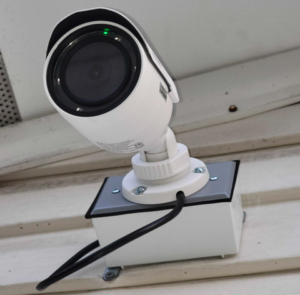A Day in the Life of a Monitoring Center Dispatcher
/in Alarm Monitoring, Commercial Security, Home Security/by PR TeamWhen you hear the voice on the other end of the line — “Thank you for calling First Response, how can I help you?”— it can be easy to forget that not only does the person who answered the phone field all incoming calls, they also provide true life safety and security to our wonderful clients and community. The operators and dispatchers in our UL listed monitoring center, iWatch, answered a whopping 2,875 number of calls just last week, and are the people behind-the-scenes who answer alarm calls, perform hourly welfare checks on officers, dispatch officers, contact emergency services and more.
To shed a little light on the tasks and duties of an operator and dispatcher, we’ve captured a snapshot of a typical shift at our in-house monitoring center in the Beaverton/Portland area.
22:50 – Receive pass-down information from previous dispatcher to prepare for upcoming shift change.
23:05 – Conduct a welfare check on all patrol officers.
23:10 – Review on-site check-in sheet to be sure all on-site officers have checked in for the start of their shift.
23:25 – Receive an alarm call from monitoring company and dispatch an officer to respond.
23:40 – Officer arrives to alarm call. Check on his status every 10 minutes until he is clear.
00:10 – Receive a noise complaint of a loud party. Dispatch an officer to speak to offending apartment.
00:35 – Receive a parking complaint from an apartment complex. Dispatch an officer to ticket/possibly tow vehicle.
00:40 – Officer investigates an open door at one of her routine patrols. Start checking her status every 5 minutes until she clears.
00:50 – Officer with open door found no one on site but cannot secure the door. Called the account’s Emergency Contacts and left messages. Finally reached an Emergency Contact that will come down and secure the door. Officer will stand by until his arrival.
02:40 – Receive call from the Police Department. They need assistance from an officer to gain entry to a school where a broken window has been found. Dispatched an officer to assist PD.
03:12 – Receive a “Blue Phone” emergency call from a college campus of a woman is locked behind the gate and needs to be let off campus. Dispatched an officer to assist her.
03:32 – Receive a call from a client wanting extra patrols due to their burglary system being down. Transferred them to the Watch Commander.
04:20 – Receive a call of multiple alarms at a school. Dispatched two officers to check on alarms.
04:35 – Officers arrive to previous school call and witness through a window 2 juveniles in the hallway. Dispatched the Police Department to assist in apprehending the juveniles. Continue to check on officer’s status every 5 minutes until PD arrives.
05:35 – Receive a call of a fire alarm at a business. Dispatched Officer to give Fire Department access to building.
06:10 – Did not receive a check-in from an on-site. No answer for site phone or personal cell. Notified the Watch Commander and he had me send a patrol to check for officer on site.
06:40 – Starting sanitizing work station and organizing any paperwork.
06:50 – Give pass-down to relief of all current calls being handled by officers.
07:00 – End of shift.
To learn more about the services First Response offer, contact us today!
About First Response
Founded in 1989 and headquartered in Beaverton, First Response Security is one of the largest privately owned security companies in Oregon. Our commitment to “A Higher Standard” enables us to deliver the client service we believe you deserve.
The Pitfalls of Self Monitored Alarm Systems
/in Alarm Monitoring, Commercial Security, Home Security/by PR TeamToday, there are endless options for home security systems that let you do everything from adjust your thermostat and check on your pet during the day, to arm your alarm from your phone if you forget to set it when you leave for the day.
With all this technology, it’s no wonder that the “Do it Yourself” (DIY) (also known as “Monitor it Yourself” (MIY), or “Self Monitor”) security movement is in full swing. Why would you pay someone else to install and/or monitor your alarm when you can access surveillance footage and receive alarm alerts any time on your phone or tablet?
It might not be so easy. Here are 3 benefits of professional monitoring to consider before going the full DIY/MIY route in an attempt to save an average of $1 per day.
1. True 24/7 Monitoring
Being able to tap into your indoor or outdoor surveillance footage on your phone any time is pretty hard to beat. You can make sure your dog walker arrives on time, or check to see who’s at the door. But then there are those times when you’re — gasp! — away from your phone, or out of cell service range. And it probably happens more often than you think. When you’re at work, in a meeting, hiking, at a movie, sleeping, or on a date, you’re probably not checking in on your phone.
And while the surveillance footage that comes from MIY is certainly better than nothing, having a live operator who can verify the alarm and who is ready to send help at a moment’s notice can save you thousands of dollars in property lost or damaged, plus fines from dispatching police to a false alarm.
2. Central Monitoring Centers have back up power…for days
So you left your house and forgot to charge your phone — trust us, you are not alone. But when your battery sinks below 1% and no one in your office is volunteering their spare charger, who is going to watch over your security system? Central monitoring centers like ours are required to have battery back up and diesel generators that will power the station for multiple days on end. Their battery power will never reach 1%, meaning you will never lose service.
3. Private Alarm Response
Your alarm has gone off — now what? Is your plan to call a neighbor and ask them to put themselves into a potentially dangerous scenario to verify if a break-in occurred? Will you respond yourself? Our service allows our Operator to view alarm events and/or video while dispatching one of our Alarm Response Officers to check on the alarm at any time of day. We have Officers patrolling all over the Portland metro area 24/7, and our operators are trained in how to calmly react and respond to a variety of situations, dispatching the Officer closest to the incident for maximum response speed.
In summary, receiving MIY text and video alerts to your phone can make a GREAT addition to professional monitoring and provide you with a number of useful benefits, like those offered through the Total Connect app. Considering the benefits above, you can take advantage of true value and peace of mind that comes from trained, professional Operators monitoring your system around the clock — without worrying about low batteries or interruptions.
About First Response
Headquartered in Beaverton, First Response Security is one of the largest privately owned security companies in Oregon. Our commitment to “A Higher Standard” enables us to deliver the client service we believe you deserve.
What is a UL Listed Monitoring Center?
/in Alarm Monitoring, Commercial Security, Home Security/by PR TeamIf our Officers and alarm systems are the heart of First Response Security, then iWatch, our in-house UL listed central monitoring station, is the brain. Our highly trained operators are constantly in contact with our professionals in the field, monitoring alarms and surveillance, dispatching officers, keeping accounts updated and answering a truly impressive amount of calls each day.
And while we’re very proud of our operators and our in-house monitoring center’s UL listing, we understand that not everyone knows exactly what a UL listed monitoring center is. Here is a brief breakdown of UL and how our UL listing is just another part of our Mission towards providing a Higher Standard of security solutions.
What is UL?
UL stands for Underwriters Laboratories, a global safety science company based out of Illinois. OSHA has approved the agency for administering safety testing in the U.S. Basically, UL creates a series of “Standards” that companies must meet to become UL listed or certified.
UL works with government agencies as well as companies in the alarm and fire safety industries (plus many others). They hold companies to high standards of safety and security by testing, inspecting and evaluating alarm systems and monitoring centers for reliability. In addition to this, they also perform a surprise evaluation each year to ensure that the UL listed company remains operating at the highest standard.
What does it mean to be a UL listed central station?
In short, being a UL listed central station means that our monitoring center is held to the highest possible safety standards. The tests are scrupulous and detailed, evaluating everything from the building to alarm monitoring processes. Becoming a UL listed central station requires utilizing two backup generators that can keep the building’s power supply steady for hours on end in case of a power outage, installing emergency lighting in and around the building, building a man trap before entering the premises, ensuring server and internet redundancy, having two operators on duty at all times…the list goes on.
What does a UL listed monitoring center do?
This will vary by company. Our monitoring center, iWatch, monitors residential and commercial intrusion alarms and fire systems, dispatches officers to answer alarm notifications, acts as a virtual guard for video surveillance and provides answering services for security companies all over the country.
What does working with a UL listed monitoring center do for you?
You can bask in the additional peace of mind that comes from knowing that a UL listed central station like ours has been through some of the most rigorous safety and security testing in the United States — and UL will continue to evaluated us on upholding these standards for years to come.
3 Tips for Increased Office Fire Safety
/in Alarm Monitoring, Commercial Security/by PR TeamWhether it’s on your mind because of a certain episode of This Is Us or you’ve seen the security spring cleaning tips floating around online, there’s never a bad time to brush up on office fire safety information.
We’ve gathered a few tips to help prevent and prepare for fires in the office.
1. Have a fire evacuation plan.
Between 2007-2011, there were more than 3,340 fires in office properties, according to estimates by the National Fire Prevention Association. Does your office have an emergency evacuation plan? Do you practice it regularly? If the answer to either of these questions was “no,” it’s time to implement or review your office emergency evacuation plan. OSHA has a great, comprehensive breakdown of them here.
2. Invest in the right equipment – and ensure it’s being monitored.
In 2016 alone, the Oregon Office of the Fire Marshal estimated $128 million lost in non-residential fires. And while we’re not saying anything bad about those $25 smoke alarms you bought at the hardware store, professionally monitored smoke detectors and CO monitors could mean the difference between peace of mind and that sinking moment you realize you forgot to buy new batteries for your self-installed smoke detector…two years ago.
Having a designated, highly trained person watching over your fire system 24/7 ready to dispatch the fire department can provide unmatched protection. According to research done by the NFPA, 31% of office fires happen between 7pm and 7am, and result in more than 67% of the property damage cost. Meaning: almost one third of these fires are happening after regular office hours, when no one is around to see or hear the alarms going off. As noted by the NFPA, “These findings highlight the need for automatic detection and extinguishing equipment to protect these properties when they aren’t occupied.”
Not only is professional monitoring a useful step in protecting your workplace from fire, but having a licensed technician install the fire equipment only adds to peace of mind. They work with industry standard equipment and know the most effective places to install these items. Plus, our technicians always test to make sure everything works properly — and return annually to ensure it keeps working properly. A simple tip to help you remember to check your smoke detectors in the meantime? Test them when you change your clocks!
3. Know the different fire extinguishers.
Did you know that there are more than six different classes of fire extinguishers? Most class A fire extinguishers will work on ordinary combustibles (paper, plastics, clothing, wood, etc.), but it’s good to learn which fire extinguishers at your workplace specialize in what type of fire — so you never spray the wrong one on, say, the expensive hardware and irreplaceable data of your computer servers. There’s also PASS, an easy acronym to remember how to use them:
Pull the pin
Aim low
Squeeze the lever
Sweep from side to side
How to Stay Secure in 6 Easy Steps
/in Alarm Monitoring, Commercial Security, Home Security/by PR TeamWe’ve all experienced it — you see the Nextdoor post about break ins around your neighborhood, or the broken glass outside the business down the street from yours. There is some suspicious activity going on around you, and while this can be a scary thought, there are some simple things you can do to help prevent your business or home from becoming the next target. We chatted with our team of local experts to come up with some practical security tips.
Invest in a security system. The whole purpose of a security system is to help should your property ever be targeted for theft, vandalism or other suspicious behavior, right? According to the FBI’s annual crime report, there were more than 1.5 million burglaries in the U.S. in 2016. The good news? That number is down over 25% from what it was in 2012. In a study at the University of North Carolina at Charlotte’s Department of Criminal Justice and Criminology from 2012, 60% of criminals surveyed said that an alarm presence would cause them to seek an alternative building. And if they discovered an alarm while attempting a burglary, more than half commented that they would vacate the property immediately.
Display your security company’s signs and stickers. This one goes hand in hand with investing in a security system. The same study from North Carolina noted that signs of increased security — like alarm stickers and signs from your security company, or surveillance cameras — were a deterrent when placed in windows, doors or yards where people can see them.
Keep your property well lit. Having good lighting, paired with keeping any bushes or trees near windows trimmed, can also discourage targeting due to lack of a convenient hiding place. No one wants the spotlight on them when they are up to something dubious, after all. According to a survey done by KGW last year of 86 inmates serving time for burglary in Oregon, homes with large bushes or trees and blind spots are ideal targets. Things like motion activated lights and 360 degree lighting coverage leave intruders nowhere to hide.
Know your neighbors. Make it a point to get to know the neighbors on your street. Better yet, form a neighborhood watch to keep an eye on the block and alert police if anything suspicious is happening. It also doesn’t hurt to give a trusted neighbor your contact information in case they see something odd happening around your property.
Consider video surveillance. Installing video cameras, motion activated cameras and video doorbells are all great ways to get an idea of what is happening on your property quickly, whether through a monitoring center like ours or through a convenient App on your phone. And researchers in that same UNC 2012 study found that nearly 40% of those involved with property theft said seeing a security camera would factor into their decision to go somewhere else.
Make sure you have an emergency contact list. One of the most forgotten security items is also one of the easiest! Make sure to update your emergency contact list for your alarm system on a regular basis, in case there is ever a situation when you don’t answer your phone when your alarm system is activated.
ABOUT FIRST RESPONSE
Headquartered in Portland, First Response Security is the largest privately owned full service security company in Oregon. Our commitment to “A Higher Standard” enables us to deliver the client service we believe you deserve.

CONTACT
First Response Security
4970 SW Griffith Dr. Suite 100
Beaverton, OR 97005
9820 East Burnside Street
Portland, OR 97216
Phone:
(800) 862-4880
Fax:
(503) 207-5301
CCB#: 111713
NEWS & ARTICLES
 Business Security: The Ultimate Guide to Getting Security for Your BusinessMarch 29, 2024 - 8:30 am
Business Security: The Ultimate Guide to Getting Security for Your BusinessMarch 29, 2024 - 8:30 am Security Patrol Services: Giving Control Back to the Client with MIRS 3.0February 23, 2024 - 7:18 am
Security Patrol Services: Giving Control Back to the Client with MIRS 3.0February 23, 2024 - 7:18 am Ring Video Doorbell: Who Else Can See Your Videos?August 16, 2023 - 3:13 pm
Ring Video Doorbell: Who Else Can See Your Videos?August 16, 2023 - 3:13 pm



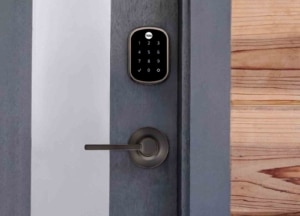
 y, which can help you save on energy costs.
y, which can help you save on energy costs.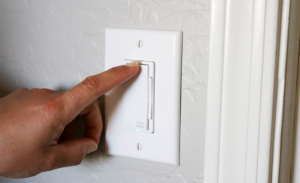 Color: white with a light almond paddle included
Color: white with a light almond paddle included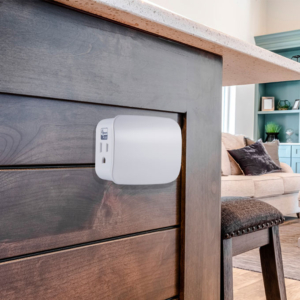

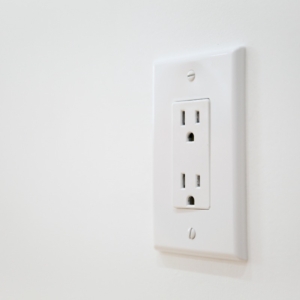 s provides the connected convenience modern lifestyles demand. The smart dimmers, switches, and outlets connect to a control panel to provide home automation from the Total Connect app, or to all popular voice assistants.
s provides the connected convenience modern lifestyles demand. The smart dimmers, switches, and outlets connect to a control panel to provide home automation from the Total Connect app, or to all popular voice assistants.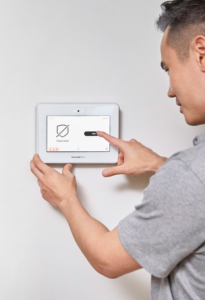
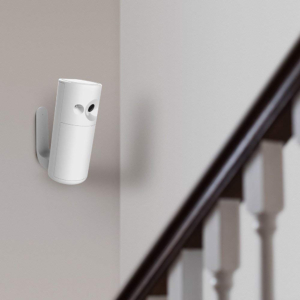
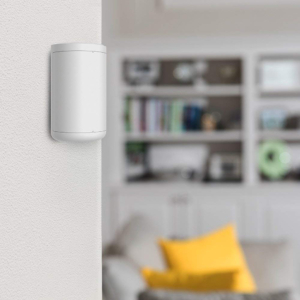


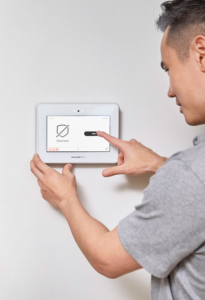 Backlit Display: Yes (times out after 5 Minutes when AC power is lost)
Backlit Display: Yes (times out after 5 Minutes when AC power is lost)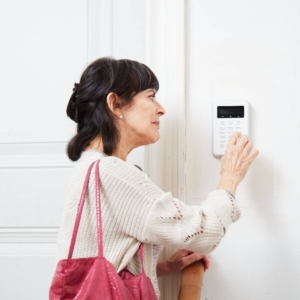 Backup Battery: 24-Hour, 7.2V, 6x600mAh, NiMH
Backup Battery: 24-Hour, 7.2V, 6x600mAh, NiMH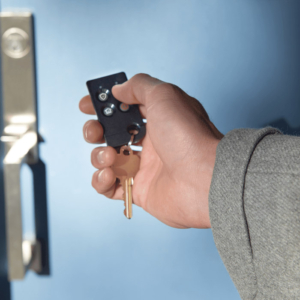
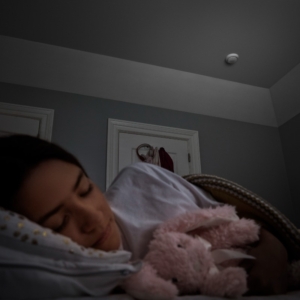
 Our smoke and carbon monoxide (CO) detector is a two-way, professionally monitored, wireless, combination smoke/heat and CO detector. More advanced than a standard battery-operated smoke detector, it provides true multi-threat detection and can react faster to real danger. Our combo detector also audibly announces the threat so young children and other family members know what to do.
Our smoke and carbon monoxide (CO) detector is a two-way, professionally monitored, wireless, combination smoke/heat and CO detector. More advanced than a standard battery-operated smoke detector, it provides true multi-threat detection and can react faster to real danger. Our combo detector also audibly announces the threat so young children and other family members know what to do.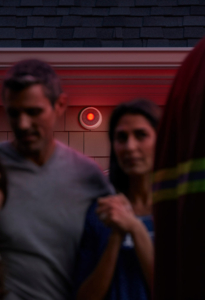
 One-Go-All-Go: Yes
One-Go-All-Go: Yes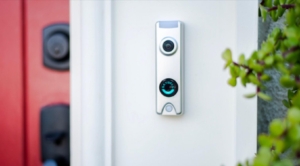
 Image Sensor Type: CMOS
Image Sensor Type: CMOS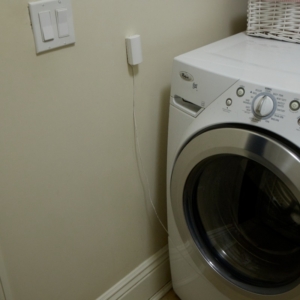 RF Frequency: 2:4 GHz
RF Frequency: 2:4 GHz